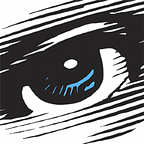Trance (2013, Dir. Danny Boyle)
Synopsis:
Young auctioneer, Simon (James McAvoy), gets hit on the head and knocked unconscious whilst seemingly trying to prevent the theft of one of Goya’s paintings by Franck (Vincent Cassel) and his gang, but when the gang get the painting back to their hideout they discover they’ve only stolen an empty frame. When Simon eventually leaves hospital he is tortured by the gang to discover the painting’s location, as he was actually supposed to be their inside man on the robbery, but he claims he can’t remember. Finally, realising that he must genuinely have some form of amnesia caused by the blow to the head, the gang enlist the help of hypnotherapist, Dr. Elizabeth Lamb (Rosario Dawson), who Simon picks at random, to get him to remember. As she delves into Simon’s memories, however, the more involved Elizabeth becomes with both Simon and Franck and the truth about what actually happened gradually gets revealed.
If you’ve never actually heard of this film, don’t worry, neither had I when I first picked up the DVD, intrigued by the combination of Danny Boyle and the main cast and what seemed like an interesting plot.
Filmed predominantly in 2011 but then put on hold whilst Boyle worked on the opening ceremony for the 2012 Olympics and not finished until 2013. This film probably slipped under most people’s radar. Whilst it’s not in the top tier of Boyle’s filmography, as with everything Boyle has made in his varied career, it’s still fascinating nonetheless.
Whilst most people probably only became aware of him via his stylish feature film debut, Shallow Grave, Boyle’s career goes back even further to his work as a producer on the late Alan Clarke’s final films and directing two of the darkest episodes of TV’s Inspector Morse (Masonic Mysteries and Cherubim and Seraphim). Since his zeitgeist-capturing second film, Trainspotting, Boyle has continually experimented not only with the type of film he makes, but also the medium itself, in a way that is every bit the equal of his former mentor Clarke, or another of his filmmaking heroes, Nicholas Roeg. Few other directors, aside from Lars Von Trier and David Lynch have mixed consumer digital alongside Hi-definition and celluloid the way he has and no other British director comes close to being as daring with both colour and disturbing imagery as those two directors either. In many ways, Trance feels like Boyle’s version of a David Lynch story, in its rapid descent from something like a traditional thriller into something far darker and more surreal. Aided by his regular cinematographer, Antony Dod Mantle (who has also worked extensively with Von Trier) Boyle creates a vision of London that, much like Lynch’s small town America, feels familiar and yet, at the same time, one step removed from reality. Also like Lynch, he’s not afraid to push his actors to give quite daring performances.
I’m a huge fan of James McAvoy and part of the reason I was intrigued by this film was because he was in it. This film trades heavily on his likeable screen persona at the beginning, to the extent where McAvoy has gone on record as saying that he almost turned the film down, because when he first read the script Simon felt like too much of a victim for the first 15–20 pages. This along with the casting of both Cassel and Dawson turns out to be a major reason why the film works so well, because it plays with our expectations of who we expect the characters to be based on the sort of roles the actors portraying them, normally play. Cassel’s part was originally supposed to be played by Michael Fassbinder (which is interesting, considering how he and McAvoy would end up playing opposite each other in X-Men: First Class and the subsequent X-Men prequels), but the role needs someone slightly older and Cassel — who’ve seen playing a devious criminal in films such as Ocean’s Twelve — fits the role of Franck much better. Equally, several other actors were suggested for Dawson’s role as the hypnotherapist who seems to know more than she’s letting on, but it’s difficult to think of any of them being as able to move as effortlessly or as bravely between the various emotional states that role requires, as well as its full frontal nudity. The emotional rawness of Dawson’s performance, as well as the occasional scenes of graphic violence also put me in mind of another film, Cronenberg’s A History Of Violence. Like Maria Bello’s incredible work there, it is Dawson, rather than the male leads, who is really the centre of this film, something that only becomes clear as the story progresses.
If it seems like I’m being deliberately vague about the characters and the plot, it’s for good reason. This is one of those films that works best if you see it without knowing too much about it. Like all stories that deal with fractured memories, there’s a fair amount of contrivance involved — how could A really predict that B would react this way etc. — so it’s really to Boyle and the cast’s credit that the story remains as gripping and believable (within the context of the plot) that it does.
Matching the stylish visuals, is the score by Underworld’s Rick Smith, who has been working with Boyle since Trainspotting. What’s most interesting is how Smith’s score mutates as the film goes on, starting quite ambient and moving closer to dark techno for the showdown between the 3 leads at the film’s climax, mirroring how the story too becomes progressively darker and more harsh.
Whilst it’s by no means equal to Boyle’s best films, this remains a fascinating work from a visionary director and certainly deserves wider recognition than it has gotten, as well as being one worth watching just for Dawson and McAvoy’s performances, alone. Give it a chance — it’s certainly not a film you will forget about easily.
